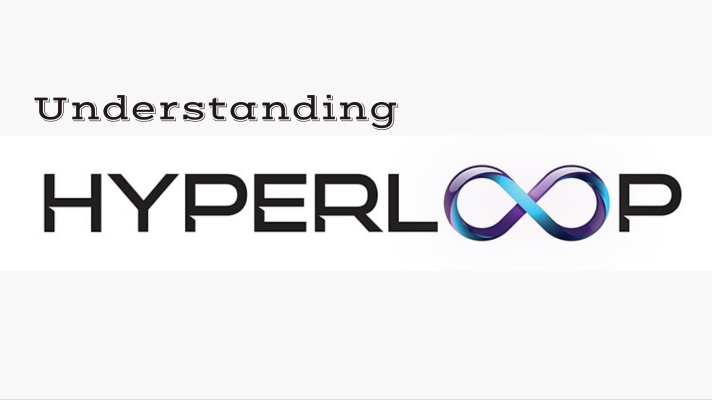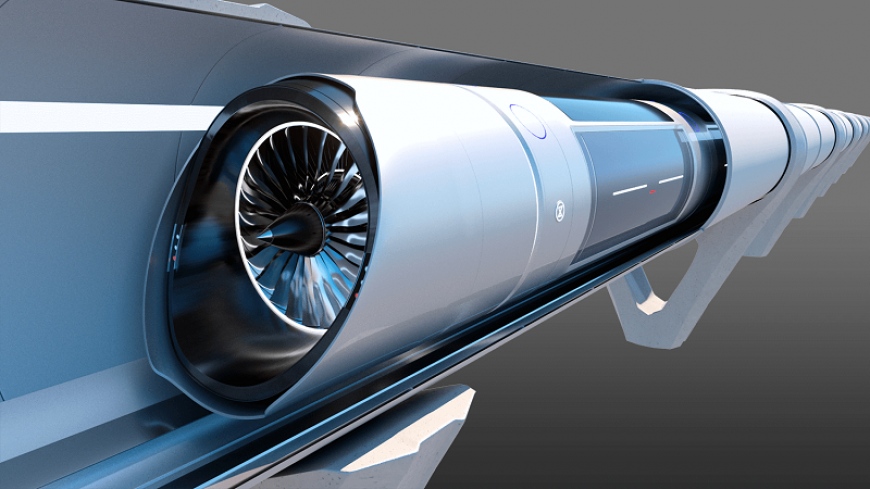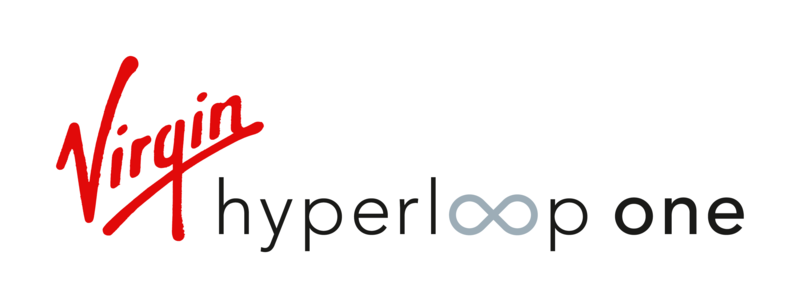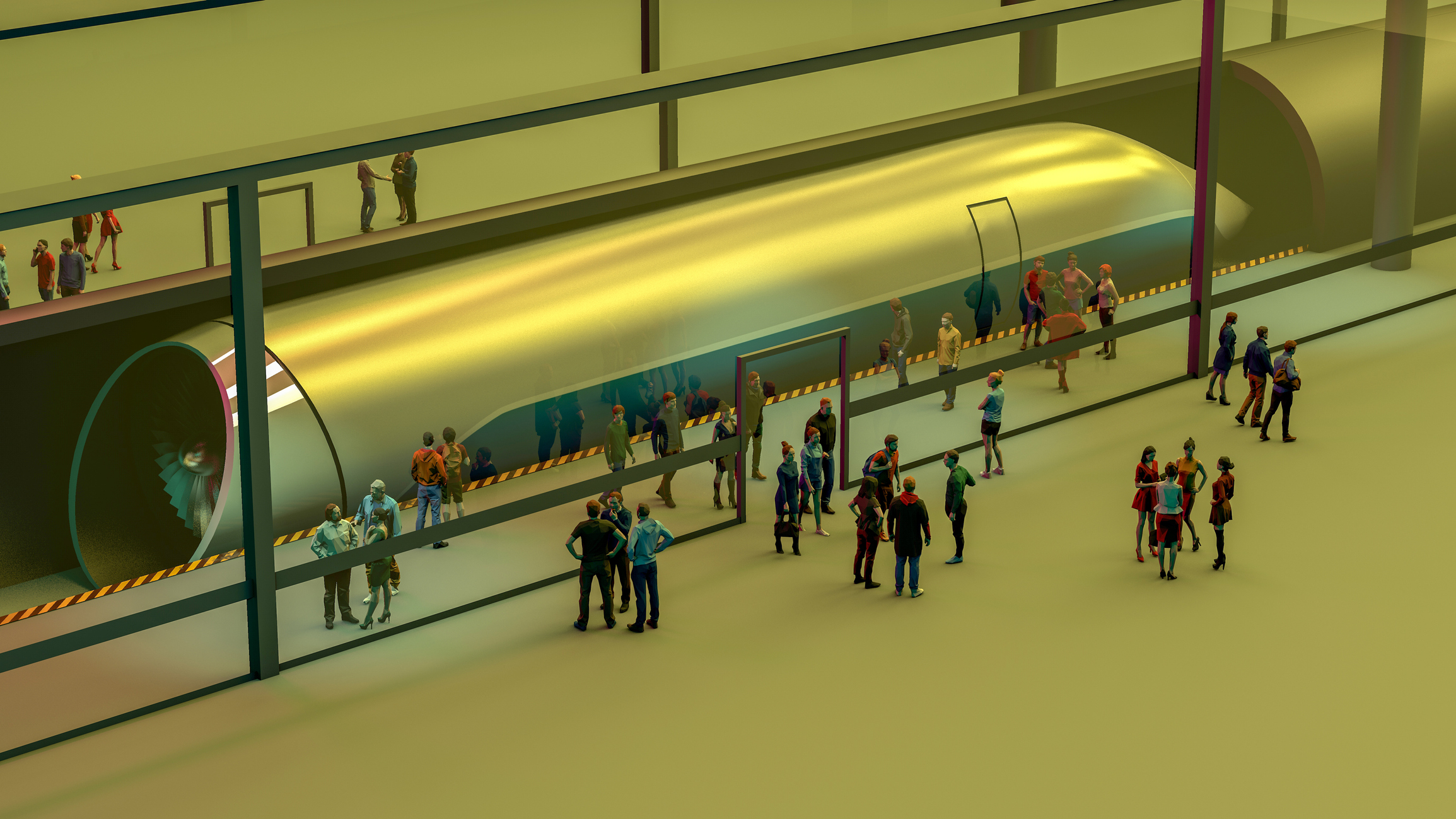
A very famous quote has been given by Henry David Thoreau "you cannot dream yourself into a character; you must hammer and forge yourself one" which is the best applied on the billionaire visionary founder and CEO of the world's two biggest company i.e SpaceX and Tesla - Elon Musk whose two biggest innovative, futuristic and breathtaking cutting edge technologies have been covered up in our blog earlier. This man has not only shown the world the future but also guiding the world to step toward it. In this article, we are again back with a new vision of Elon Musk which is going to be a reality very soon. If you are one of them who thinks that office is very far away from home and reaching there takes time, Mr Musk has already got some cool tech for you. In this article, we are going to discuss such technology which can make travelling insanely fast. We are talking about speed which is going to be way faster than bullet trains and even twice the speed as much as of a plane. And the main cutting edge point about this idea is that it is totally ground-based. Now, it seems quite insane but the science behind it can make it understand better. We are using mechanical systems for our transport work from more than 5 centuries and till now it has been well estimated what is stopping us from achieving great speed at least on the ground. Basically, friction and air resistance are the main problems. The idea is that if these resisting forces can be controlled then very high speed can be achieved. We are not only talking about high speed but this can also be proved effective in conserving the environment and also its a very cost-effective idea. Well, we are talking about Hyperloops.
Description

The idea of this project was first introduced by Elon Musk back in 2012 at a Pando daily event in Santa Monica where he called this as the fourth mode of transportation apart from the ground-based, water-based and air-based. Musk mentioned that this hypothetical transportation system would propel people and cargo filled pods through steel tubes over long distances. This problems of resistances like air resistance and force of friction can be carried away by vacuum tubes and magnetic levitation respectively. This high-speed mode of transportation would empower the following characteristics: weather immunity, very high speed i.e twice as a plane, low power consumption and accident-free. The name Hyperloop was coined for this technology because this would travel in a loop and the speed is hypersonic. Currently, Musk's two big companies Tesla and SpaceX are working on this project to make it available for the public very shortly. After the announcement of this project, a designed was also published on the blogs of the two companies describing the efficiency, designing and cost of the system. But as it has been described the system looks quite simple The loops and the pods are easy enough to build. But making hyperloop and making it available for the public use need a lot of political will, a few good engineers and a large amount of money. At first in 2012 when Elon Musk suggested the idea of Hyperloop, he didn't provide any scientific evidence for its existence. Later in August 2013, he provided with a 57-page white paper describing his technical thinking about the working of this system.
How it works
Magnetic Levitation(maglev)
As mentioned earlier, Hyperloop is all about removing the air pressure and friction which slows down a vehicle's speed. To do this one idea is that, the pod should hover over the track i.e a magnetic levitation train. Originally, Musk gave an idea of doing this with air bearings, little jets of air under the pod. Most of the engineer suggested not to rely on the standard magnetic levitation train which uses electromagnets, the Hyperloop system would use permanent magnets to lift the pod. This idea would use less power consumption and there is no role of current here because of the permanent magnets. When these magnets move over the conductive arrays, they create a magnetic field that pushes the pod up. The complementary magnetic system would give the pod a push every few miles. The main idea is that permanent magnets would be placed under the capsules or pods in a Halbach array so that the magnetic field produced would focus on one side cancelling the field of another side. If air resistance and friction can be controlled then we don't exactly need a high energy propulsion system to propel the pod. The technology of magnetic levitation has been licenced to Hyperloop transportation technology(HTT) by Lawerence Livermore National Labs.
Loop
So the problem of friction can be easily solved through the above method. And now there's one problem left i.e air resistance. And here come's the role of the tube or loop. The function of the loop is to enclose the space around the area through which the pod moves. This can be used to pull out nearly all the air inside the loop to create a vacuum. As nearly all the air would be pulled out, its circumstances would be like a plane and by providing the pod with a little energy it would catch its speed. With this idea, the idea of efficiency grows up. As there are fewer air resistances, very less amount of energy would be enough to propel the engine, unlike aeroplanes where a massive amount of fuel is used to maintain its velocity. No use of electricity throughout the magnetism process and no use of any biofuel can lead to less cost and environment-friendly transportation system.
Propulsion
The linear induction motor and the linear Synchronous motor are the two most useful technologies for propulsion used today. The linear induction motor performs better in terms of cost and reliability. But for energy consumption, the linear synchronous motor performs better but the current technological approach is not that developed to reach as high speed as the linear synchronous motor. Moreover, the linear synchronous motor needs to be more developed to get that level of safety to be used in Hyperloops.
 |
| Image Source - Google | Image by - EIT |
The Pod
As the passenger pods would travel in the near-vacuum loops, they are being developed aerodynamically optimised to be able to resist the aerodynamic drag. The capacity of one pod is expected to be around 50 and with further improvement, the capacity will increase. According to the aircraft design guidelines, the pod is recommended to have a diameter of 2.7 meters.
Communication systems
Of course, the current communication systems that we use in railways and subways are totally not useful for the new Hyperloop mode of transportation. To exchange data with the outside stations, the pods need to be connected always. Optical fibres can be used to solve the problem but before use, they need to more development. The companies expect that in future, communication systems and protocols will improve a lot. Moreover, many companies are supposed to improve current technologies to be used in High-speed transportations.
Artificial Intelligence
Artificial Intelligence would play a very important role in this fourth mode of transportation. Every Hyperloop developing company is more focused on using the A. I in their systems. They can be used in many broad ways. A. I can be used for designing and maintaining the system. Also A. I will play an important role when the system will be operational as they can be used for safety precautions, system failure etc.
Well, the system of Hyperloop looks very interesting and futuristic but Musk himself said that he was too busy to build the technology himself. His sentence makes sense as he is already running two of his very big companies i.e SpaceX and Tesla and he wouldn't have time to build up and run yet another company. So he encouraged developer around the world interested in Hyperloop. Soon after his papers reached the internet, a bunch of companies came up to have their hands on with Hyperloop. Among all of the companies, LA-based Virgin Hyperloop one proved to be the most successful in this field.
Virgin Hyperloop One

After the grand announcement of Hyperloop by Elon Musk that fascinated the whole world, a bunch of companies came forward to be able to develop this technology first in the world. One such successful companies in the Virgin Hyperloop One that is dreaming to develop this fourth mode of transportation very shortly. It is a startup project founded by serial investor Shervin Pishevar along with space engineer Josh Giegel form Virgin Galactic and Brogan Bambrogan from SpaceX. They evaluated the papers showcased by Elon Musk and set out to build the system that is cheaper, eco-friendly and speed that can rival planes in 2014. Till the day the company has managed to raise $364.4 million by over 80 investors. The current chairperson is Sultan Ahmed Sulayem with CEO Jay Walder. The company has started running projects in cities like Mumbai, Dubai and many more across the Americas. They have their headquarters in Los Angeles and a running test track in Las Vegas. Although their tests are going on and till the date, no commercial pod is made available, the company is expected to make the technology available for public use by 2030.
Hyperloop transportation technologies(HTT)
After Musk's announcement to the world, a lot of contenders came up to bring this Hyperloop technology to reality. After Virgin Hyperloop's success, a new contender came up that claims to build this technology very soon. Also known as HyperloopTT, Hyperloop Transportation Technologies is an American company that is using crowd collaboration approach to build up the fourth mode of transportation based on Hyperloop showcased by Elon Musk. Initially, the company was founded by Jumpstarter Inc. that used its crowdfunding to build it. The company managed to attract a bunch of community members, engineers and corporations to build that social interface for Hyperloop project. In 2013, the company made a partnership with the engineering software company Ansys which developed the fluid dynamic technology for their system. In February 2015, the company had 200 employees. By 2016 they managed to raise $108 million.
In 2016, HTT developed a smart composite material named Vibranium. It is a lightweight carbon fibre material used in the Hyperloop pods to provide the passengers with better protection against damage from the exterior. They claim that the Vibranium is eight times lightweight than aluminium and 10 times stronger than steel. This material is equipped with embedded sensors to deliver information about heat, temperature and stability.
The Boring Company
Now there are so many contestants trying to do their best to bring the technology of Hyperloop to reality. But originally the idea was given by Mr Musk, right. Initially, he welcomed the companies of the whole world to develop Hyperloop as he was busy already in running two of his companies. But after few years, once he was driving he wrote a tweet "Traffic is driving me nuts. Am going to build a tunnel boring machine and just start digging..." and shortly Musk is back in the game.
Basically, the Boring Company is an American company founded by Elon Musk in December 2016 that build tunnels and infrastructures. In March 2017, they announced that they would use a tunnel boring machine to dig a tunnel at SpaceX. In July 2017, Musk announced plans for building Hyperloop that will connect cities like New York City, Baltimore and Washinton DC. Two years after Musk's tweet, the company published a 500 paged paper where they mentioned various aspects of their work progress. In those papers, they had also written about the Baltimore- Washinton tunnel. There it is mentioned that it could travel passenger at 700 mph nearly around the speed of sound, in a sealed vacuum Hyperloop. The company had also mentioned that the correct potential of Hyperloop technology is currently unknown. So the system would lonely be able to carry 2000 passengers a day.
Safety with Hyperloops
Although this system of Hyperloop seems to be a need step for humanity, its very difficult to predict how safe it will be. Till now there is no operational Hyperloop built by any company yet. Every passenger will travel at a speed more than a plane, this can affect their whole body. To maintain a greater extent of safety and security, all the systems need to check and monitored thoroughly to avoid any kind of system failure. As Elon Musk mentioned the Hyperloop system will use less power but there is still a need to have an extra power supply to avoid power outage.
It can be seen that all the companies are taking time before launching any operational system. This means that all are busy in monitoring their systems for any fault. As the pods are expected to go over the speed of a plane, they need to be well tested for which a huge test facility is likely to be needed. There is a certification agency for every kind of transportation, so before the Hyperloop is made public reports says that such agencies will be set up.
Hyperloop is one such sustainable solution that can make the world more advance with satisfying the growing demand for high-speed travel. But before the proper implementation, proper foundation and safety-security measures need to be taken. With the bright and innovative ideas of people like Elon Musk, the world is moving further. With such ideas, we humans can take any challenge.
I think it is possible for ordinary people to choose to be extra-ordinary - Elon Musk
If you like the article then please share it and subscribe to our newsletter to get the latest updates.

































Comments